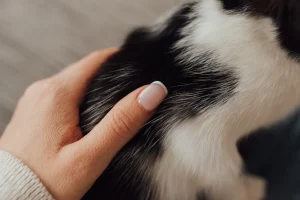Is your cat’s gums looking jagged and causing concern? It’s important to understand the reasons behind this unusual appearance. Read on to discover why your cat may have jagged gums and what steps you can take to address this issue.
Your cat’s jagged gums may be a sign of dental disease or oral health issues. Make an appointment with your veterinarian to get a proper diagnosis and treatment plan.
Common Causes of Jagged Gums in Cats
So, you’ve noticed your feline friend’s gums looking a bit rough around the edges. What could be causing this jagged appearance? Well, there are several potential reasons behind your cat’s jagged gums. One common culprit is dental issues. Poor dental hygiene can lead to gum disease, which in turn can cause gums to become inflamed and jagged. Additionally, infections such as stomatitis or gingivitis can also result in jagged gums.
Another possible cause of jagged gums in cats is an underlying health issue. Conditions like autoimmune diseases or nutritional deficiencies can manifest in oral symptoms, including jagged gums. It’s essential to consult with your vet to rule out any serious underlying health concerns that may be contributing to your cat’s gum problems. Remember, early detection is key to successful treatment!
And let’s not forget about trauma. If your cat has experienced any trauma to the mouth or face, it could result in jagged gums. Whether it’s from a rough play session or an accidental injury, trauma can certainly impact the appearance of your cat’s gums. Keep an eye out for any signs of pain or discomfort in your furry companion and seek veterinary care if needed.
Remember, when it comes to your cat’s oral health, prevention is key. Regular dental check-ups, proper oral hygiene, and a balanced diet can all help keep your cat’s gums healthy and happy. Don’t hesitate to reach out to your vet if you have any concerns about your cat’s oral health – they are there to help you and your feline friend!
Symptoms to Watch Out For
You love your cat and want to ensure they stay healthy and happy. So, what are the red flags to watch out for when it comes to your cat’s gums? One of the most obvious signs of unhealthy gums is jagged or inflamed tissue. If you notice your cat’s gums looking rough or irregular in texture, it’s time to take action.
Other symptoms to watch out for include bad breath, excessive drooling, bleeding gums, difficulty eating, and redness or swelling in the mouth. These can all be indicators of underlying dental issues or infections that require attention. Keep an eye on your cat’s behavior as well – changes in eating habits, vocalization, or grooming can all signal discomfort or pain related to oral health problems.
If you observe any of these symptoms in your cat, don’t delay in seeking professional help. Your vet can conduct a thorough examination to determine the root cause of your cat’s gum issues and recommend appropriate treatment. Remember, early intervention is crucial in maintaining your cat’s overall health and well-being.
And as an extra tip, consider incorporating dental care into your cat’s routine. Brushing their teeth regularly, providing dental treats or toys, and scheduling professional cleanings can all help prevent gum issues and keep your cat’s smile looking sharp. Your cat will thank you for it!
Treatment Options for Jagged Gums
If your cat is dealing with jagged gums, there are a few treatment options to consider. One effective way to address this issue is by scheduling a professional dental cleaning with your veterinarian. This can help remove tartar buildup and address any underlying dental issues that may be causing the jagged gums.
Another option is to establish a consistent at-home oral care routine for your cat. This can include regular brushing using feline-friendly toothpaste or dental treats to help keep their gums and teeth healthy. Additionally, providing your cat with chew toys designed to promote dental health can also be beneficial in preventing jagged gums.
Remember, it’s essential to consult with your vet before starting any treatment to ensure you’re taking the right steps to address your cat’s dental health needs effectively.
Preventing Jagged Gums in Cats
To prevent your cat from developing jagged gums in the future, practicing good oral hygiene is key. This includes brushing your cat’s teeth regularly, ideally daily or a few times a week, using a toothbrush and toothpaste specifically designed for felines. Additionally, incorporating dental treats or toys into their routine can help maintain their dental health.
Another proactive step you can take is ensuring your cat receives regular veterinary check-ups that include a thorough examination of their gums and teeth. Your vet can provide guidance on proper oral care and recommend any additional steps to prevent jagged gums.
Incorporating these preventative measures into your cat’s routine can help keep their gums healthy and reduce the likelihood of developing dental issues in the future.
Additional Unique Insight: Consider adding dental water additives to your cat’s water bowl as an additional preventative measure. These additives can help reduce plaque and tartar buildup, contributing to better overall oral health for your feline friend.
The Importance of Regular Dental Check-ups
Jagged gums in cats can indicate various dental issues that may require professional intervention. Regular dental check-ups are crucial for your cat’s overall health and wellbeing. These check-ups can help catch any dental problems early on, preventing more severe issues down the line. A veterinarian can thoroughly examine your cat’s mouth, teeth, and gums to identify any abnormalities or signs of infection. Additionally, regular cleanings can help remove plaque and tartar buildup, which can contribute to gum inflammation and jagged gums. Remember, prevention is key when it comes to your cat’s dental health, so schedule those check-ups regularly!
Fun Facts About Cats’ Oral Health
Did you know that cats have 30 teeth, while humans only have 32? It’s fascinating how their oral anatomy differs from ours. Another interesting fact is that cats are notorious for hiding dental pain, meaning they may suffer in silence when experiencing dental issues like jagged gums. This is why it’s crucial to pay close attention to any changes in your cat’s behavior, eating habits, or oral health. Providing your cat with dental treats or toys can also help promote better oral hygiene and reduce the risk of gum problems. Remember, a healthy mouth leads to a happier and healthier feline friend!
Additional Unique Insight: Cats are masters at masking discomfort, so even if your cat seems fine, it’s essential to stay vigilant and proactive about their oral health. Regularly inspecting their gums and teeth can help you catch any issues early on and prevent them from worsening.
Alex, a passionate animal lover, has experience in training and understanding animal behavior. As a proud pet parent to two dogs and three cats, he founded AnimalReport.net to share insights from animal experts and expand his knowledge of the animal kingdom.









